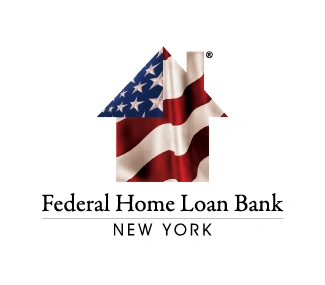UPDATE: On March 16, 2020, the FHFA extended to June 30, 2020 the FHLBanks’ ability to enter into LIBOR-based instruments that mature after December 31, 2021, except for investments and option embedded products.
The LIBOR Transition is the biggest transformation in financial services today, affecting some $200 trillion of U.S. Dollar transactions. LIBOR is slated for cessation at the end of 2021. Increasingly, financial regulators in the US and UK are speaking out about LIBOR reform, and their message is uniform – transition needs to begin today.
This leaves FHLBNY members and their clients with a need to identify an alternate benchmark index for new floating-rate transactions and a strategy for managing legacy LIBOR transactions extending beyond 2021. In this article, we’ll talk about the alternative benchmark, the role of the Federal Home Loan Bank System in developing a new market, and the role of the Federal Home Loan Bank of New York in providing alternative floating-rate funding.
Introducing SOFR: A New Benchmark Rate, New Products and New Markets
The Alternative Reference Rate Committee (ARRC), a group of private-market participants convened by the Federal Reserve Board and the Federal Reserve Bank of New York (New York Fed), endorsed the Secured Overnight Financing Rate (SOFR) to be LIBOR’s replacement benchmark index in 2017. The New York Fed began publishing SOFR in April 2018, and SOFR-indexed products began trading in the capital markets in the second half of 2018.
As of July 2019, more than $240 billion in SOFR bonds have been issued into the market, and nearly $200 billion in SOFR swaps have been transacted. While this represents encouraging growth for products referencing a new index, there is much work to do given the short time horizon. The International Swaps and Derivatives Association (ISDA) reports that in the second quarter 2019, derivatives traded notional referencing SOFR was $84.7 billion, or 0.25% of the $32.4 trillion derivatives traded notional referencing LIBOR during the period. The securities side has made better progress: in the second quarter of 2019, 65% of floating rate notes issued were LIBOR-indexed,17% referenced SOFR, and 15% referenced Treasury Bill rates.
SOFR and the Federal Home Loan Bank System
As the second-largest issuer of floating-rate notes (FRNs) after the U.S. Treasury, with $316 billion outstanding, the Federal Home Loan Bank (FHLB) System was, and remains, a key stakeholder in benchmark reform. The FHLB System was an early advisor to the ARRC in 2016 and, since 2018, has been represented at meetings of the ARRC through the Federal Home Loan Bank of New York.
The FHLB System began issuing SOFR bonds in November 2018, and today the FHLB System is the #1 issuer of SOFR Bonds, with more than $118 billion issued as of August 2019.
The FHLB System alone makes up 48% of all SOFR FRNs outstanding. Even more impressively, in just nine months, the FHLB System has shifted its floating-rate debt composition from 99% LIBOR to 33% SOFR/66% LIBOR, meaning that the FHLB System has already converted a third of its floating rate debt to SOFR. In June, July and August of 2019, the FHLB System issued more SOFR debt than LIBOR debt.
The FHLB System’s strength in the SOFR market allows the FHLBNY to offer SOFR funding to our members at competitive levels. The FHLBNY began offering the SOFR-linked Adjustable Rate Credit (ARC) Advance in November 2018.
What are the advantages of SOFR-indexed funding?
|
What are some considerations to keep in mind in connection with the transition to SOFR as a funding index?
|
“Since 2014, the official sector has publicly warned that LIBOR could become unstable. My key message to you today is that you should take the warnings seriously the regulator of LIBOR has said that it is a matter of how LIBOR will end rather than if it will end, and it is hard to see how one could be clearer than that.”
Randall Quarles
Vice-Chair for Supervision, Board of Governors of the Federal Reserve System
June 3, 2019
“The FHLBanks provide access to reliable liquidity to approximately 6,800 members in support of housing finance and community investment. Our regular and frequent issuance of SOFR-linked securities strengthens the FHLBanks’ ability to meet the current and future needs of our members as we participate in the development of the SOFR index in support of our mission.”
Randy Snook
Chief Executive Officer, Federal Home Loan Banks’ Office of Finance
August 21, 2019
“As the leading issuer of LIBOR- linked securities, the Federal Home Loan Banks have a unique role and responsibility in both the development of the SOFR market and the transition away from LIBOR.”
José R. González
President and Chief Executive Officer, Federal Home Loan Bank of New York
December 3, 2018

